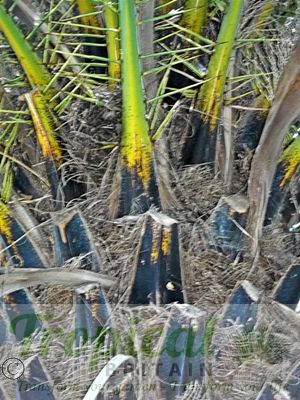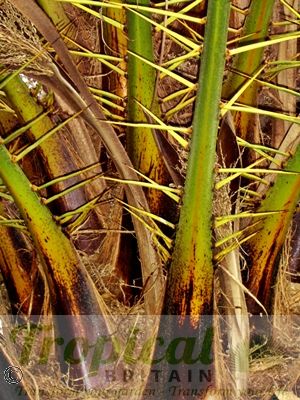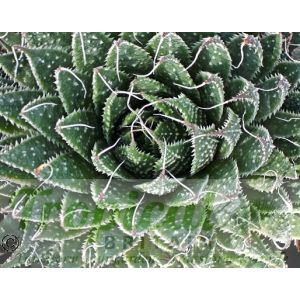Phoenix theophrasti, the Cretan Date Palm, is one of only two palms endemic to Europe and is native to the Eastern Mediterranean where it occurs in limited stands in Crete, mainland Greece, the islands of Amorgus and Anafi and southwest Turkey. Growing in its natural habitat of arid rocky gorges and sandy coastlines Phoenix theophrasti experiences fiercely hot summers with low rainfall and cool temperate winters with occasional rain and frost. Like other members of its genus, Phoenix theophrasti can be a challenge to grow in Britain and in some areas where the winters are too wet or persistently cold it is likely to be challenge too far. Nontheless, for the obsessive palm nut - and particularly those who live in the South of the country - especially those with a favoured coastal frost-free breeze - Phoenix theophrasti is probably the toughest of the Phoenix palms for the UK. However, I have seen many tough-looking Phoenix palms reduced to a frost-scorched mess by a British winter and I strongly recommend tieing up the fronds and fleecing while the plants are of a size small enough to be able to manage this. Keeping the plant as dry underfoot as possible from mid-September through to April - in the same manner as one treats an Agave or desert Yucca - is also important. Because of the eventual size that Phoenix palms grow to; the wide spread of their fronds; the long sharp spines on their lower-leaf sections and their large root systems, they are not suitable for growing next to the cosy comforting warmth of your house. Instead they need to be planted in a very free-draining rocky and sandy soil in a sheltered position or corner that faces south or south-west, where it can bask in the rays of the afternoon sun and where it has some protection from the colder north or easterly wind. During the summer they can be watered well and will respond gratefully to copious quantities of nitrogen-rich fertiliser on a regular basis. Once a week is about right from May through to August and then switch to feeding it a Potassium sulphate formula in readiness for winter. All watering should stop long before the first frosts arrive. If you have an Indian Summer don't be tempted to water it. These plants have strong roots and are perfectly capable of finding their own moisture.
The species honours the Greek philosopher and botanist, Theophrastos, the most eminent botanical scholar of antiquity who gave us the very first systemisation of the botanical world and who is considered to be the founding father of botany.
Additional Information
| Order | Arecales |
|---|---|
| Family | Arecaceae |
| Sub-Family | Coryphoideae |
| Geographical Origin | Greece and Turkey |
| Cultivation | Full sun. Sheltered aspect. Well-drained dry substrate with plenty of gravel and sand. |
| Eventual Height | 4 m in the UK |
| Eventual Spread | 3 m |
| Hardiness | Down to about -8C, it should be given extra protection with a double layer of horticultural fleece during the worst of the winter weather. Protect the growing crown as much as possible |
-
Excellent quality young Palms and NolinasThis palm was part of my third recent order from Tropical Britain and, like the others, arrived extremely well packed and within 24 hours of dispatch. The very strong well developed root system was typical of my other purchases all of which, despite a typically cool and often wet summer here in coastal South Wales, have either very encouraging new growth emerging or are showing significant consolidation of 'on arrival' foliage.
Posted on

Free DELIVERY
ON ALL ORDERS OVER £99THIS OFFER IS VALID ON ALL OUR STORE ITEMS.













